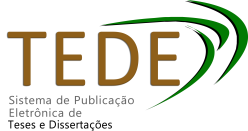| ???jsp.display-item.social.title??? |


|
Please use this identifier to cite or link to this item:
http://localhost:8080/tede/handle/tede/168Full metadata record
| DC Field | Value | Language |
|---|---|---|
| dc.creator | RODRIGUES HISPAGNOL, NICOLAS | - |
| dc.contributor.advisor1 | JUAREZ LOURENCO , JUAREZ LOURENCO | - |
| dc.date.accessioned | 2024-09-11T15:08:21Z | - |
| dc.date.issued | 2024-02-20 | - |
| dc.identifier.citation | RODRIGUES HISPAGNOL, NICOLAS. APLICAÇÃO DO MÉTODO AEROMAGNÉTICO E GRAVIMÉTRICO PARA A INVESTIGAÇÃO CRUSTAL DA INFLEXÃO ENTRE A SUB-BACIA TUCANO NORTE E A BACIA DE JATOBÁ, NORDESTE DO BRASIL. 2024, 142 páginas da Dissertação do Programa de Pós-Graduação em Geofísica - Observatório Nacional, RJ. | por |
| dc.identifier.uri | http://localhost:8080/tede/handle/tede/168 | - |
| dc.description.resumo | Este estudo se concentra na região da inflexão entre a Sub-bacia Tucano Norte e a Bacia de Jatobá, as quais são caracterizados como bacias geradas por um rifte abortado durante a ruptura do supercontinente Gondwana. Notavelmente, antes deste estudo, a conexão entre a inflexão e a morfologia do embasamento havia sido subestimada. Para suprir essa significativa lacuna de conhecimento, recorremos aos métodos: magnético, gravimétrico e sísmico de reflexão. Um aspecto pioneiro deste estudo consiste na utilização de dados magnéticos sintéticos para simular o método de sutura na concatenização dos projetos para abranger toda a área de estudo. Ainda, a partir dos dados magnéticos, procedemos à geração de mapas temáticos que foram meticulosamente correlacionados com interpretações das seções sísmicas. Paralelamente, com relação aos dados gravimétricos, utilizamos a anomalia Bouguer para estimar a profundidade da Moho e, posteriormente, eliminamos o seu efeito na mesma, para a realização das modelagens gravimétricas 2,5D. Essas modelagens culminaram na produção de um mapa da superfície do embasamento cristalino. A integração meticulosa dessas interpretações revelou características geológicas intrinsecamente relacionadas à inflexão, ao mesmo tempo em que forneceu indícios substanciais da possível presença de um corpo alóctone de alta densidade. Estes reultados não apenas aprimoram nossa compreensão dos processos geodinâmicos nesta região, mas também oferecem contribuições de destaque para a compreensão dos processos associados à ruptura do supercontinente Gondwana e ao processo de rotação da microplaca Sergipe. Modelagem gravimétrica; Inversão da gravidade; Magnetometría; Microplaca; Inflexão. | por |
| dc.description.abstract | This study delves into the inflection region between the Tucano Norte Sub-basin and the Jatobá Basin, both of which originated as a result of an aborted rift during the breakup of the Gondwana supercontinent. Remarkably, prior to this study, the connection between the inflection and basement deformation had been underestimated. To address this notable gap in knowledge, we employed state-of-the-art geophysical methods, including magnetic, gravity, and seismic reflection techniques. A pioneering aspect of this study lies in the utilization of synthetic magnetic data to simulate the stitching method process in concatenating projects, which allowed for comprehensive coverage of the entire study area. Moreover, leveraging magnetic data, we meticulously generated thematic maps that were closely correlated with interpretations of seismic sections. In parallel, concerning the gravity data, we used the Bouguer anomaly to estimate the depth of the Moho and subsequently removed its effect to conduct 2.5D gravity modeling. These modeling efforts culminated in the creation of a detailed map of the crystalline basement surface. The meticulous integration of these interpretations revealed geological features intrinsically linked to the inflection and provided substantial evidence of the possible presence of high-density Allochthon body. These results not only enhance our comprehension of the geodynamic processes in this region but also make significant contributions to the understanding of processes associated with the breakup of the Gondwana supercontinent and the rotation of the Sergipe microplate. | por |
| dc.description.provenance | Submitted by Christianne Baptista (christiannegarnier@on.br) on 2024-09-11T15:08:21Z No. of bitstreams: 1 Nicolas Rodrigues Hispagnol.pdf: 11920056 bytes, checksum: 231c377a1d5cc5b483427c8bf806e710 (MD5) | eng |
| dc.description.provenance | Made available in DSpace on 2024-09-11T15:08:21Z (GMT). No. of bitstreams: 1 Nicolas Rodrigues Hispagnol.pdf: 11920056 bytes, checksum: 231c377a1d5cc5b483427c8bf806e710 (MD5) Previous issue date: 2024-02-20 | eng |
| dc.description.sponsorship | Coordenação de Aperfeiçoamento de Pessoal de Nível Superior - CAPES | por |
| dc.format | application/pdf | * |
| dc.language | por | por |
| dc.publisher | Observatorio Nacional | por |
| dc.publisher.department | Divisão de Programas de Pós-Graduação - DIPPG | por |
| dc.publisher.country | Brasil | por |
| dc.publisher.initials | ON | por |
| dc.publisher.program | Programa de Pós-Graduação em Geofísica | por |
| dc.rights | Acesso Aberto | por |
| dc.subject | Modelagem gravimétrica;Inversão da gravidade;Magnetometría;Microplaca;Inflexão. | por |
| dc.subject.cnpq | GEOFISICA::GEOFISICA APLICADA | por |
| dc.title | APLICAÇÃO DO MÉTODO AEROMAGNÉTICO E GRAVIMÉTRICO PARA A INVESTIGAÇÃO CRUSTAL DA INFLEXÃO ENTRE A SUB-BACIA TUCANO NORTE E A BACIA DE JATOBÁ, NORDESTE DO BRASIL | por |
| dc.type | Dissertação | por |
| Appears in Collections: | Teses de Doutorado PPGG | |
Files in This Item:
| File | Description | Size | Format | |
|---|---|---|---|---|
| Nicolas Rodrigues Hispagnol.pdf | 11.64 MB | Adobe PDF | Download/Open Preview |
Items in DSpace are protected by copyright, with all rights reserved, unless otherwise indicated.




